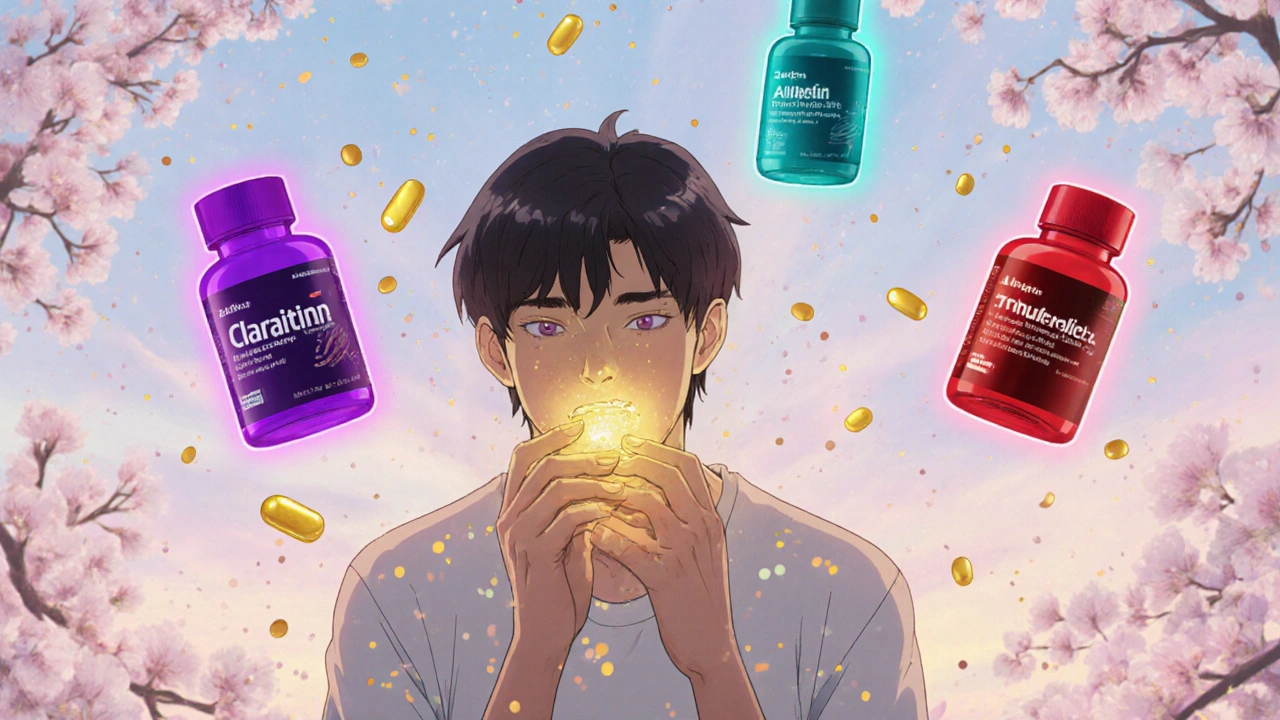
Allergy Medication Selector
Which Allergy Medication Is Right For You?
Take this quick assessment to find the best allergy medication for your specific symptoms and lifestyle needs.
Your Symptoms
Your Priorities
Every spring, millions of people reach for Claritin thinking it’s the best fix for sneezing, itchy eyes, and runny noses. But is it really? Maybe you’ve tried it and still feel awful. Or maybe your friend swears by Zyrtec, and your coworker says Benadryl is the only thing that works. So what’s the real difference between Claritin and its alternatives? Let’s cut through the noise and break down exactly how these common allergy meds stack up - no marketing fluff, just facts you can use.
What Claritin (Loratadine) Actually Does
Claritin’s active ingredient is loratadine, a second-generation antihistamine. That means it blocks histamine - the chemical your body releases when it thinks pollen, dust, or pet dander is an invader. Unlike older antihistamines, loratadine doesn’t cross the blood-brain barrier easily, so it doesn’t make most people sleepy. That’s why it’s sold as a 24-hour, non-drowsy option.
Claritin starts working within 1 to 3 hours and lasts a full day. Most people take one 10 mg tablet daily. It’s available over-the-counter, generic versions are cheap, and it’s safe for kids over 2 years old. But here’s the catch: it doesn’t work for everyone. Studies show about 30% of people don’t get full relief from loratadine alone.
Zyrtec (Cetirizine): Faster, Stronger - But Sleepier
If Claritin feels too weak, Zyrtec might be your next step. Its active ingredient, cetirizine, is also a second-generation antihistamine, but it’s more potent. Clinical trials show Zyrtec provides slightly better symptom control than loratadine, especially for itchy eyes and nose.
Here’s the trade-off: Zyrtec causes drowsiness in about 14% of users, compared to 8% with Claritin. That’s not a huge difference, but if you drive, work with machinery, or need to stay sharp, it matters. Zyrtec kicks in faster too - often within 1 hour. If you’re dealing with sudden, severe allergy flare-ups, that speed can be a game-changer.
Both are once-daily, but Zyrtec’s 10 mg dose is stronger on average. If you’ve tried Claritin and still feel like you’re fighting your allergies, switching to Zyrtec is one of the most common and effective moves.
Allegra (Fexofenadine): The Non-Sedating Middle Ground
Allegra is the quiet contender. Its active ingredient, fexofenadine, is also second-generation and non-sedating - even less likely to cause drowsiness than Claritin. That makes it a top pick for people who need to stay alert, like truck drivers, nurses, or students.
But here’s the twist: Allegra doesn’t work as well for some symptoms. Studies show it’s slightly less effective than Zyrtec for itchy skin and watery eyes. It also takes longer to start working - up to 2 hours. And unlike Claritin and Zyrtec, Allegra can’t be taken with fruit juice (like orange or grapefruit). The acid in juice reduces absorption by up to 40%. You have to take it with water.
Allegra’s big advantage? Fewer drug interactions. If you’re on blood pressure meds or antidepressants, Allegra is often the safest bet. It’s also the only one of the three that doesn’t need dose adjustments for most people with kidney problems.
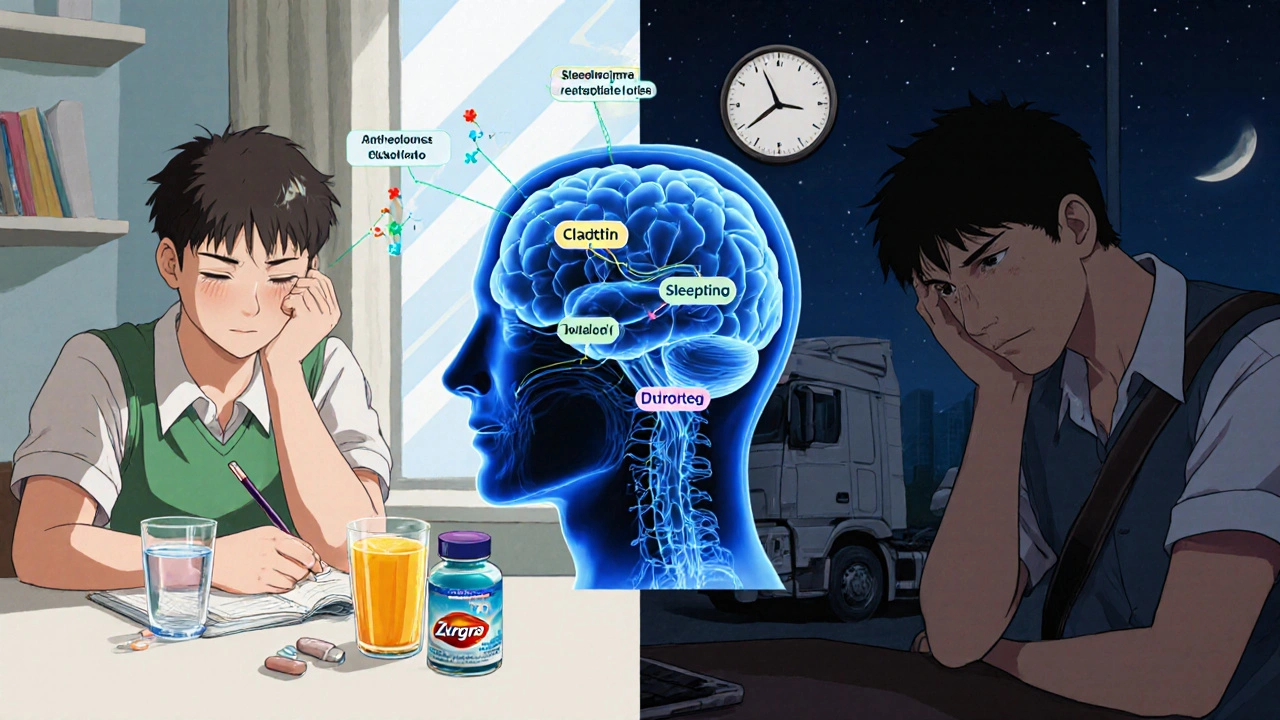
Benadryl (Diphenhydramine): The Old-School Option
Benadryl isn’t in the same league as Claritin, Zyrtec, or Allegra. It’s a first-generation antihistamine - the kind your grandparents used. It works fast and strong, but it knocks you out. About 50% of users feel drowsy, and that effect can last 6 to 8 hours.
It’s also short-acting. You need to take it every 4 to 6 hours. That’s why it’s rarely used for daily allergy control. Instead, people turn to Benadryl for sudden reactions - like a bee sting or hives - or for nighttime relief when itching keeps them awake.
It’s not safer just because it’s old. Benadryl can cause confusion in older adults, dry mouth, constipation, and even urinary retention. It’s not recommended for anyone over 65 as a regular allergy treatment. If you’re using Benadryl every day, you’re probably masking a problem that needs a better solution.
Generic vs. Brand: Does It Matter?
Claritin, Zyrtec, and Allegra all have generic versions that are chemically identical. The only difference? Price. A 30-day supply of generic loratadine costs around $5. Generic cetirizine is about $8. Brand-name versions? $30 to $50.
Some people swear the brand works better. But in controlled studies, there’s no difference in effectiveness. The fillers and coatings might vary slightly, but they don’t change how the drug works. If your insurance covers generics, there’s no reason to pay extra.
One exception: Claritin RediTabs or Zyrtec-D. Those are special formulations - dissolvable tablets or decongestant combos. If you need the extra decongestant (pseudoephedrine), those are worth considering. But they’re not the same as plain antihistamines.
What About Nasal Sprays and Eye Drops?
Oral meds like Claritin don’t always fix everything. If your nose is stuffed up, an intranasal corticosteroid like Flonase or Nasacort works better. These sprays reduce inflammation - the real cause of congestion. They take days to build up, but they’re the gold standard for persistent nasal symptoms.
For itchy, watery eyes, eye drops like ketotifen (Zaditor) or olopatadine (Patanol) give faster, targeted relief than pills. You can combine them with Claritin for full coverage.
Many people don’t realize they need a multi-pronged approach. Taking Claritin alone while ignoring nasal sprays is like using a bandage on a broken arm.
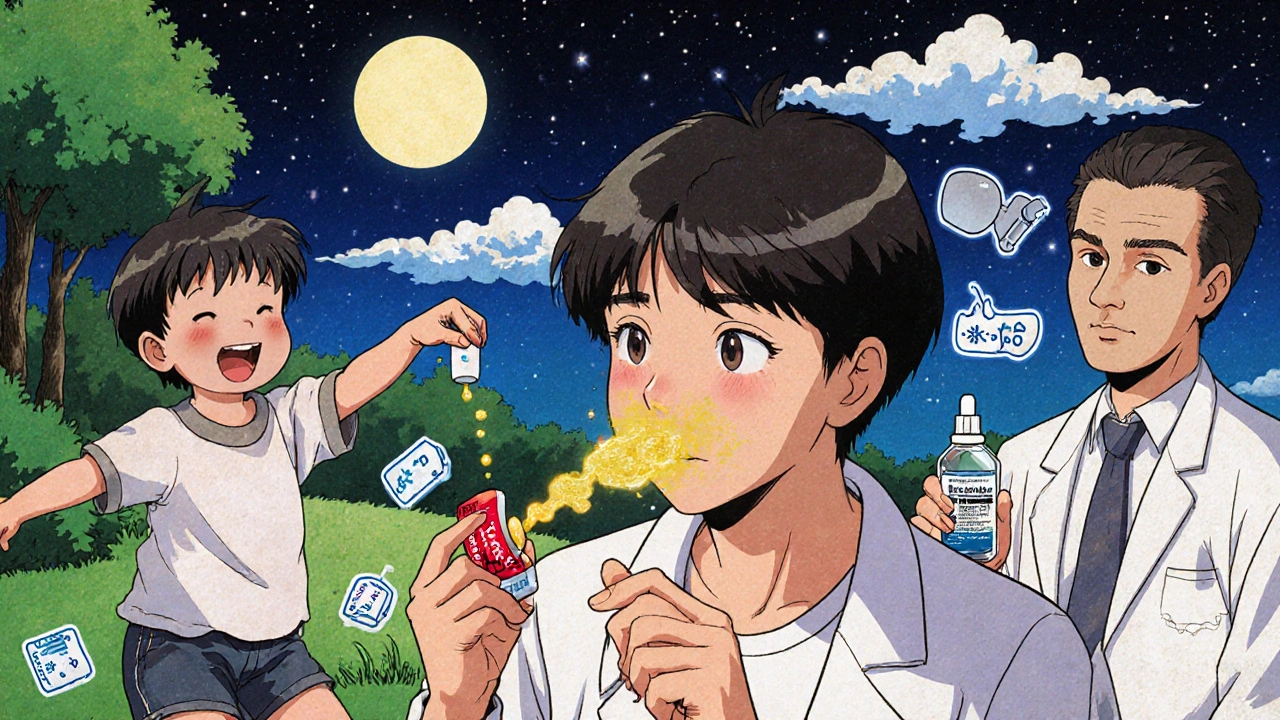
Which One Should You Choose?
Here’s a simple guide based on what you need:
- Choose Claritin if you want a reliable, non-drowsy option that’s cheap and works well for mild to moderate allergies.
- Choose Zyrtec if you need stronger relief and can handle a little drowsiness - especially if your eyes or skin are the worst affected.
- Choose Allegra if you’re on other meds, have kidney issues, or need zero drowsiness. Just remember: take it with water, not juice.
- Avoid Benadryl for daily use. Reserve it for emergencies or nighttime itching.
Still not sure? Try one for a week. Track your symptoms: how often you sneeze, how bad your eyes itch, whether you feel tired. Then switch to another if needed. Allergy meds aren’t one-size-fits-all. What works for your neighbor might not work for you.
When to See a Doctor
If you’ve tried three different antihistamines and still feel awful, it’s time to talk to a doctor. You might have:
- Chronic sinusitis
- Nasal polyps
- Allergic asthma
- Non-allergic rhinitis (triggered by smoke, perfume, or weather changes)
These need different treatments - like immunotherapy (allergy shots), prescription nasal sprays, or even a referral to an allergist. Don’t keep popping pills if they’re not helping. Your body is trying to tell you something.
Final Tip: Timing Matters
Take your antihistamine at night if you’re using Zyrtec or Benadryl - you’ll sleep through the drowsiness. Take Claritin or Allegra in the morning. That way, if you miss a dose, you’re not stuck with a full day of symptoms.
Also, start taking your allergy med before pollen season hits. Waiting until you’re sneezing nonstop means you’re already behind. Begin 2 weeks before your usual symptoms start. Prevention beats reaction every time.
Is Claritin better than Zyrtec?
Zyrtec usually works better for symptom control, especially for itchy eyes and skin. But it causes drowsiness more often. Claritin is milder and non-sedating, so it’s better for daily use if you need to stay alert. Neither is "better" - it depends on your body and your priorities.
Can I take Claritin and Zyrtec together?
No. Both are antihistamines and work the same way. Taking them together doesn’t improve results - it just increases your risk of side effects like dizziness, dry mouth, or even heart rhythm issues. Pick one and stick with it. If one doesn’t work, switch, don’t stack.
Does Claritin help with congestion?
Not really. Claritin treats sneezing, itching, and runny nose, but it doesn’t reduce nasal swelling. For congestion, you need a decongestant like pseudoephedrine (in Claritin-D) or a nasal steroid spray like Flonase. Claritin alone won’t unblock your nose.
Is generic loratadine as good as Claritin?
Yes. Generic loratadine has the same active ingredient, dosage, and effectiveness as brand-name Claritin. The only differences are the inactive fillers and packaging. Save your money - generics work just as well.
Why does Allegra say "take with water"?
Fruit juices - especially orange, grapefruit, and apple - contain acids that block the absorption of fexofenadine. Taking Allegra with juice can cut its effectiveness by up to 40%. Water doesn’t interfere, so it’s the only safe option.
Can kids take Claritin?
Yes. Claritin is approved for children 2 years and older. Use the children’s liquid or chewable forms. Dosing is based on weight and age - always follow the label or your doctor’s advice. Never give adult tablets to kids.
If you’ve been stuck with the same allergy meds for years, it’s worth re-evaluating. Allergies change. Your body changes. What worked last year might not be enough now. Try one alternative for 7 to 10 days. Track your symptoms. You might be surprised at how much better you feel.


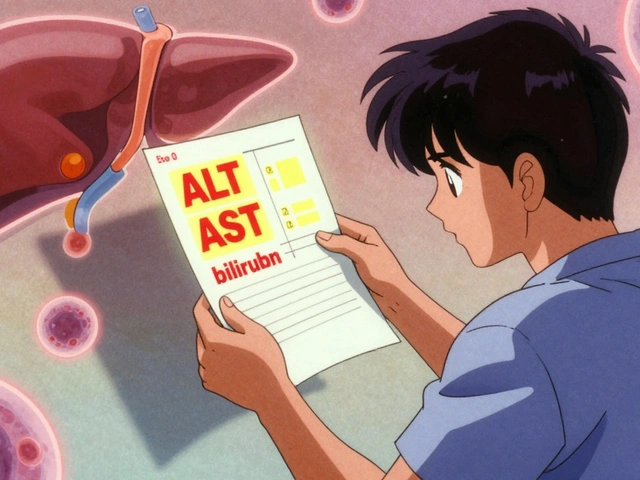
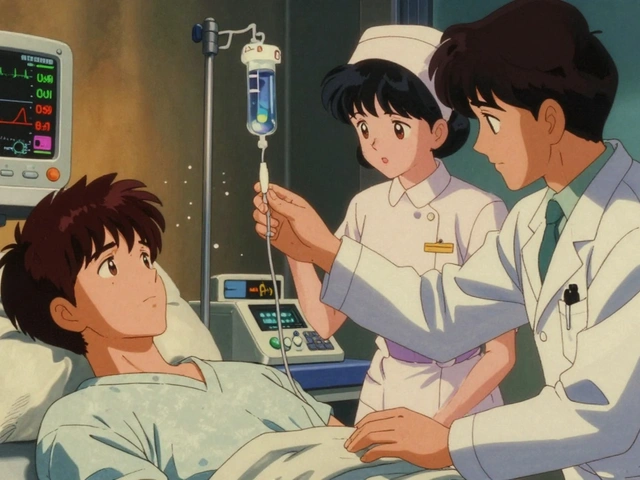
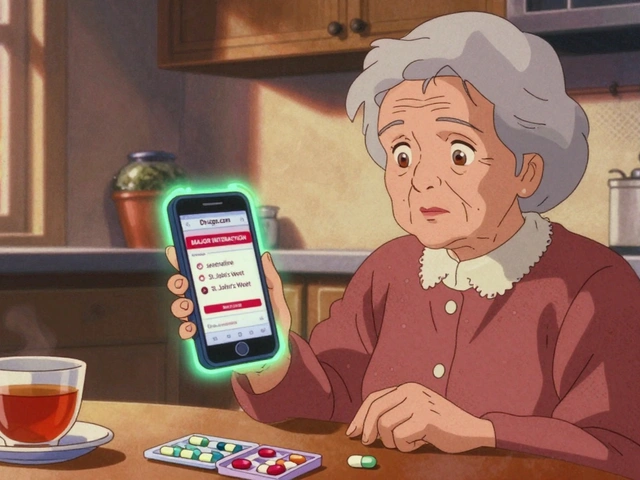
15 Comments
Been on Claritin for years and it’s fine, but last spring I switched to Zyrtec and wow-my eyes stopped looking like I’d been crying through a sandstorm. Still get a little sleepy, but I just take it at night now. Game changer. 🌿
The article provides a well-structured, evidence-based comparison. It is important to note that individual responses to antihistamines vary significantly due to pharmacogenetic differences. Clinical guidelines support trial-and-error under medical supervision when first-line agents fail.
Of course Claritin’s ‘non-drowsy’-it’s barely doing anything. Zyrtec’s the real deal. Why are we still pretending this is a fair fight? The FDA should just rename Claritin to ‘Sneeze Lite’ and be done with it. 😴
I tried ALL of them. EVERY SINGLE ONE. And nothing worked. I cried in the pharmacy aisle. My cat looked at me like I was a failure. I’m not even allergic to pollen-I’m allergic to LIFE. Why won’t anyone understand? 😭
Biggest tip I’ve learned? Start meds 2 weeks before pollen season. I used to wait until I was wheezing in the car. Now I’m on Allegra by March 1st. My nose thanks me. 🙌 Also, water only. No juice. I learned the hard way. 😅
While the article is commendably thorough, it omits a crucial point: in the United Kingdom, the Medicines and Healthcare products Regulatory Agency (MHRA) advises against the routine use of first-generation antihistamines in the elderly due to anticholinergic burden. Benadryl, while efficacious, is pharmacologically antiquated. One must consider not only symptom relief, but long-term cognitive safety.
Wow, what a shocker-Zyrtec works better than Claritin. Next you’ll tell me water is wet. And Allegra? Yeah, take it with water. Genius. Who knew? 😒 Also, why is everyone acting like this is news? I’ve been using generics since 2012. Save your money, folks.
It’s funny how we treat allergies like a puzzle to be solved with pills, when really, our bodies are screaming that something’s off. Maybe we’re not meant to live in sealed houses with AC, eating processed food, and staring at screens all day. The meds just mask the noise. But hey-I’ll take the non-drowsy option. I’ve got deadlines. 😅
People don’t realize how dangerous it is to self-prescribe antihistamines. Zyrtec + alcohol? Bad. Claritin + MAOIs? Worse. And don’t even get me started on people mixing with OTC sleep aids. You think you’re just sneezing? You’re playing Russian roulette with your heart rhythm. Wake up.
MY DAD TOOK BENADRYL EVERY DAY FOR 15 YEARS. HE GOT DEMENTIA. I SWEAR TO GOD. THEY SHOULD BAN IT. I’M NOT JUST SAYING THIS BECAUSE I’M ANGRY-I’M SAYING IT BECAUSE I LOST HIM. THIS ISN’T A BLOG POST. THIS IS LIFE.
It is essential to emphasize that the pharmacokinetics of fexofenadine are significantly impaired by concurrent ingestion of fruit juices, particularly those containing organic acids such as citric acid and malic acid. This interaction is well-documented in peer-reviewed literature, including studies published in the Journal of Clinical Pharmacology. Therefore, the instruction to take Allegra with water is not a suggestion-it is a pharmacological imperative.
Claritin? More like Claritin-Lame. Zyrtec’s the real MVP. Allegra? The quiet nerd who got good grades but never got invited to the party. And Benadryl? That’s your grandpa’s ghost haunting your medicine cabinet. You want results? Stop being polite. Take Zyrtec. Suffer the drowsiness. Live a little.
I used to think allergy meds were just about pills-but then I started tracking my symptoms, my sleep, my stress levels. Turns out, my allergies got worse when I was burnt out. I started meditating, sleeping more, cutting out dairy. And guess what? My Claritin dose went from 10mg to 5mg. Maybe the problem isn’t the medicine. Maybe it’s the life we’re living while we take it.
If you’ve tried three antihistamines and still feel awful, you’re not broken-you’re just not done exploring. Nasal sprays, eye drops, air purifiers, even allergy shots-they’re all part of the toolkit. Don’t give up because one pill didn’t fix everything. Your body’s not a vending machine. It’s a garden. You gotta tend to it.
Just a quick note: if you're on blood pressure meds, check with your doc before switching antihistamines. Some (like cetirizine) can interact with beta-blockers. I learned this the hard way-felt like I was going to pass out at the grocery store. Don’t be me. Ask questions. You’re worth it.